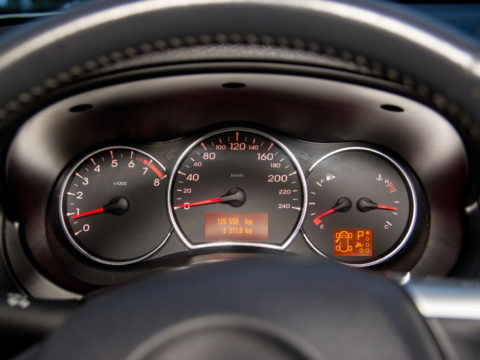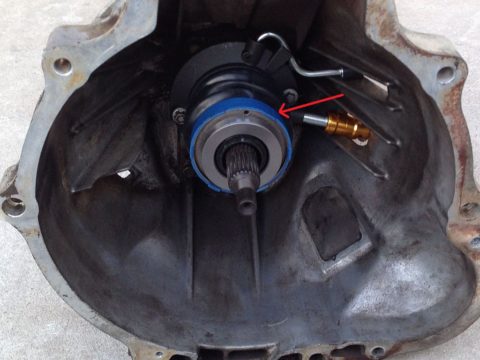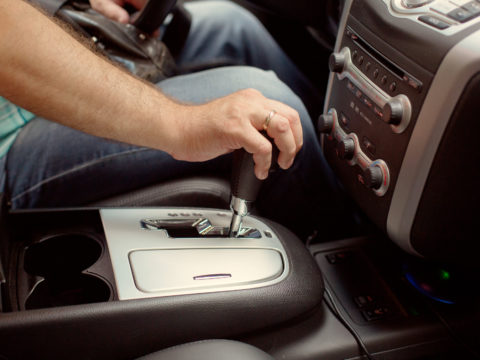If you are familiar with manual transmission vehicles, then you are familiar with the clutch assembly. The clutch, controlled by a third pedal, creates a link between the vehicle’s wheels and the engine.
It should be no surprise that the clutch assembly is an essential part of a functioning manual vehicle. So, it is equally important to understand the clutch assembly, recognize bad clutch symptoms, and know when it is time to replace it.
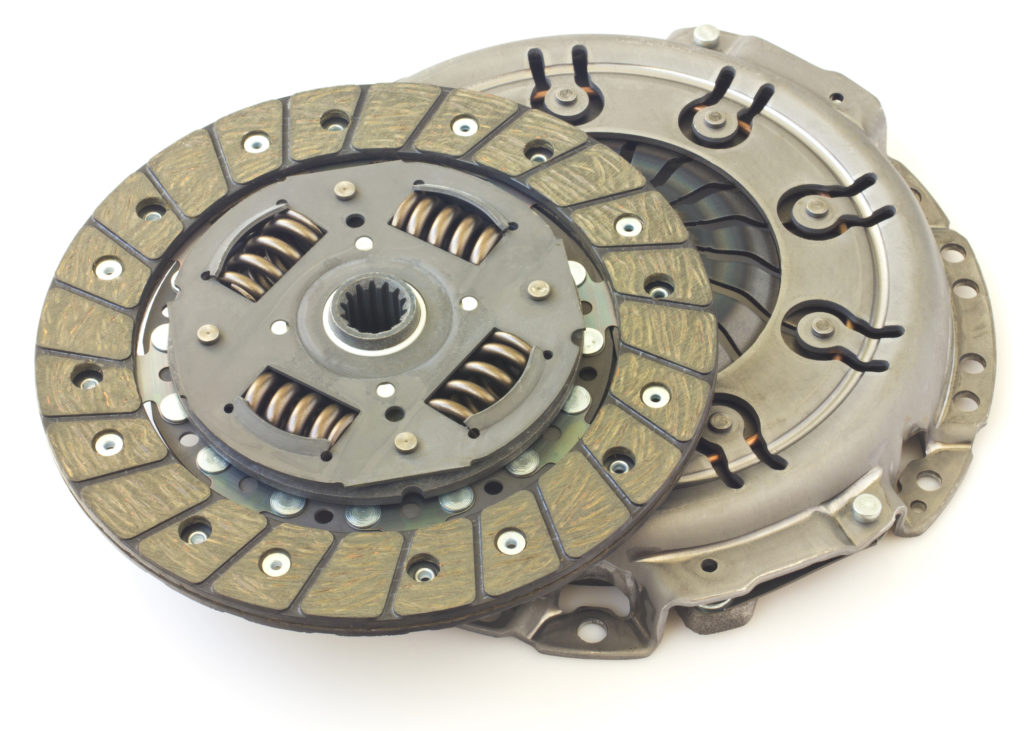
Contents
How Does a Clutch Assembly Work?
Contrary to popular belief, automatic transmission vehicles do have clutches. The main difference is that in manual transmission vehicles, the driver controls the clutch.
While it may seem like the clutch is just a simple pedal you push down on to change gears while driving, the process under the hood is much more in-depth. The clutch allows the driver to transfer power from the motor to the transmission. Essentially, it creates or severs a connection between the wheels and the engine of a vehicle.
Every vehicle has two rotating shafts. The clutch assembly connects these two shafts. The flywheel connects to the engine while the clutch plate connects to the vehicle’s transmission.
Why is this connection necessary? The motor of your vehicle is continuously spinning, but the wheels should not be. The clutch allows for a disconnect that prevents the wheels from turning continually as well.
When the two shafts are locked together, they spin at the same speed. However, when they are disengaged or decoupled, they turn at different rates.
The clutch pedal, the third pedal in a manual vehicle, can be in two positions. When the clutch is in the upright position with no pressure applied, it creates a chain reaction. This locks the engine to the transmission input shaft and causes them to spin at the same speed. Pressing down on the clutch pedal disengages the engine from the transmission input shaft.
What Does a Worn Clutch Look Like?
Given the function the clutch assembly serves, they often get worn down and need replacing. The clutch will need to be replaced every 30,000-100,000 miles depending on several factors.
Typically, a clutch will need to be replaced every 50,000 miles or so. But this estimation relies heavily on the make, model, and type of car. The driving habits of the driver will also play a role in the frequency.
A worn clutch will look physically worn down. For example, the metal will be ground down, with less definition between parts, and the spring system may appear rusty. That said, knowing whether or not your clutch is worn down and in need of replacing is less about the look and more about the feel.
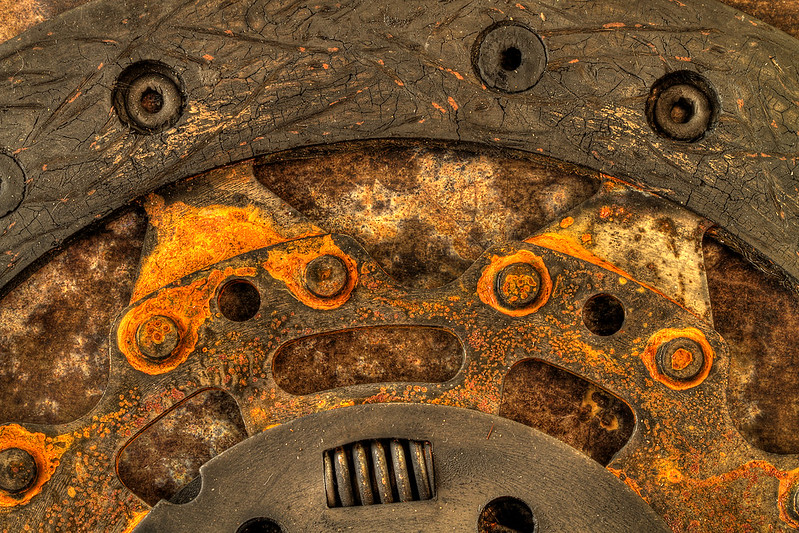
You want to keep an eye and ear out for the common symptoms of a bad clutch while driving a manual transmission vehicle. It is never a good idea to continue driving with a bad, or damaged, clutch. Not only is it costly, but it can also be dangerous for the vehicle occupants, and it can cause more serious damage to other parts of your vehicle.
8 Common Symptoms of a Bad Clutch
- Burning smell – Similar to when your brakes start to go, a bad clutch can often give off a strong burning smell. If you start to smell this sulfurous stench, it is a good idea to check your brakes and your clutch.
- Slipping clutch – If your clutch is slipping, your car may not be moving forward or accelerate poorly.
- Stiff clutch pedal – The clutch pedal may feel stiff and difficult to push down when it is starting to go bad.
- Trouble shifting gears – In addition to the clutch pedal getting stiff, you may find that it is more challenging to switch gears.
- Noisy clutch pedal – Often when a clutch wears down, the car starts to make whining or grinding sounds when the clutch pedal is engaged.
- Noisy acceleration – Similar to the noisy pedal, you may find that your car is suddenly very vocal when you accelerate.
- High sitting clutch pedal – If you find the clutch pedal sitting higher than usual, it may be time to replace the clutch.
- Sticky clutch pedal – The opposite is also true. If the clutch pedal is getting stuck in the engaged position or is slow to rise, it is likely time for a replacement.
Clutch Replacement Costs
As mentioned above, the clutch needs to be replaced every 50,000 miles or so. It may start to wear down sooner or last significantly longer. Thankfully, your clutch won’t just fail suddenly. However, there are signs of wear and tear to watch for. You need to pay attention to the common symptoms of a bad clutch, mentioned above, to know when the time is right.
Unfortunately, the clutch assembly needs to be replaced as a whole. So even if only one component is worn or damaged, you have to replace the entire clutch.
On average, the clutch replacement will cost about $500 to $1000. The total cost will vary based on the vehicle and clutch type. Some cars have a much more costly clutch assembly than others. You will need to understand the required clutch for your make and model to get a true idea of the clutch replacement costs.
While you could replace the clutch yourself, it is recommended that you use a suitable mechanic to get the job done. The replacement shouldn’t take more than a few hours of labor to complete.
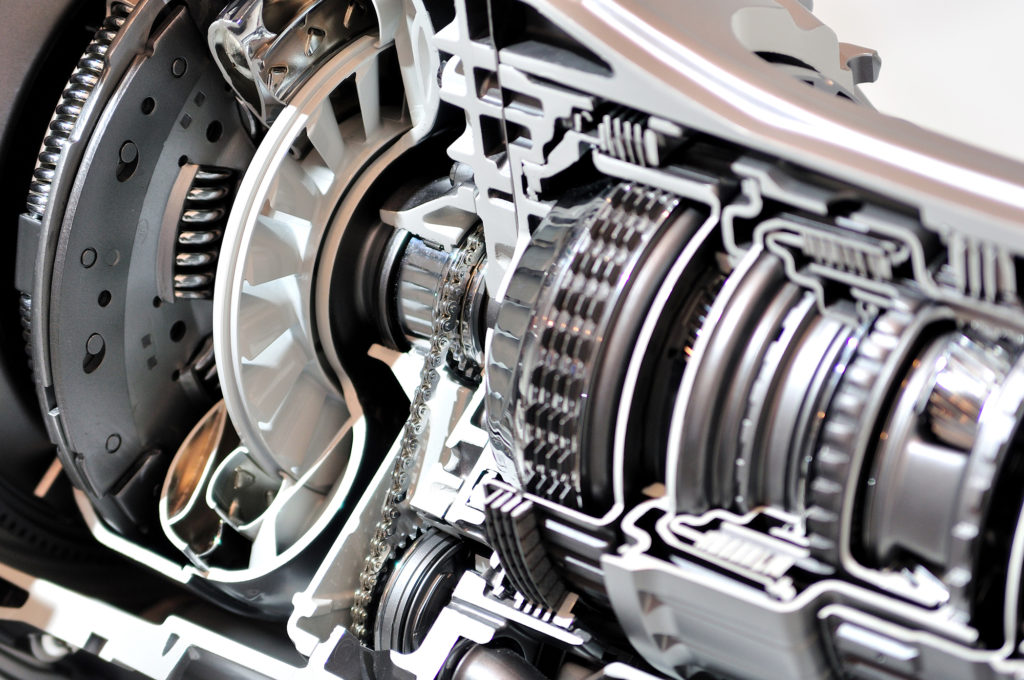
How To Make Your Clutch Last Longer
Since the lifespan of your clutch depends greatly on your driving habits, there are certainly ways that you can extend the life of your clutch assembly. To make your clutch last longer:
- Avoid revving the engine.
- Don’t haul loads heavier than recommended for your vehicle.
- Change gears smoothly.
- Don’t ride the clutch.
- Maintain a regular maintenance schedule.
FAQs
Are clutches more expensive to replace or fix?
Unfortunately, replacing your clutch is the only option. A clutch replacement can cost anywhere from $500 to $1000+ depending on the vehicle’s make, model, and type.
Can you drive a car without a clutch?
While it is possible to drive a car without a clutch, it is not recommended at all. It will not drive as it would normally with a working clutch and can do a significant amount of damage to the vehicle.
How do you test if your clutch needs replacing?
If your vehicle is not displaying the normal signs of a bad clutch, but you are nearing the recommended replacement mileage, there is a way to test your clutch.
You will need to check the clutch to see if it is engaging and disengaging properly with the vehicle running. To do this, you will need to follow these steps:
- Step on the pedal and put the car in gear. Is there any grinding or popping? Are the gears or clutch pedal sticking?
- Complete a road test. It is time to drive. Pay attention to anything out of the ordinary. Are there any grinding noises, burning smells, clutch slippage?
- Take off from third gear. This final step should be completed in an empty lot or somewhere where there is a lot of space and not a lot of other vehicles. You want to begin at a full stop and take off in third gear. Be sure to release the pedal slowly. Again, watch for the normal signs of wear and tear on the clutch.
What happens when a clutch goes out?
There are a few things that will begin to happen when the clutch goes out. It will become more difficult to switch gears. The clutch pedal may start sitting higher or sticking in the engaged position. There may be a burning smell or loud, grinding noises as you change gears or accelerate.
The symptoms will depend on which component has been worn or damaged.
Can a bad clutch cause a car not to start?
While it is unlikely, a bad clutch can prevent a car from starting. Certain parts of the clutch system would need to fail for this to occur, though.
How to get rid of the burnt clutch smell?
That burnt clutch smell can linger a lot longer than we’d like. To get rid of the smell, you will want to air the car out as much as possible. Air fresheners and fabric refreshers can go a long way in removing the smell from the inside of the car too.

